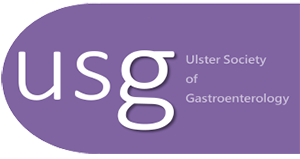Heller’s myotomy is associated with better longterm quality of life compared with pneumatic dilatation in the treatment of achalasia: a population-based case-control study.
Authors
Gray R (1), Coleman H (1), Lau K (1), McCaughey C (2), Boyle P (2), Murray L (1), Johnson B (3)Departments / Institutions
(1) Cancer Epidemiology and Health Services Research Group, Centre for Public Health, Queen’s University Belfast, Northern Ireland, UK. (2) Regional Virus Laboratory, Royal Victoria Hospital, Belfast, Northern Ireland, UK. (3) Department of Gastroenterology, Royal Victoria Hospital, Belfast, Northern Ireland, UK.Publication Date
Autumn 2014Introduction
Health-related quality of life (HRQL) is an important outcome measure in the treatment of achalasia yet long-term data on this outcome has not been widely reported.
Aims
To examine long-term disease-specific and general HRQL in achalasia patients using a population-based case-control method, and assess HRQL between treatment interventions.
Methods
Manometrically diagnosed cases (n=151) were identified and matched with controls (n=117) using a populationbased approach. Validated general (SF-12) and disease-specific HRQL questionnaires were utilised in a structured interview of all study subjects.
Results
The median time from last treatment received by achalasia patients was 4.4 years (IQR 1.9-9.8). Achalasia patients had worse physical HRQL (p=0.002), but similar mental HRQL scores, compared with controls. Physical HRQL was better in patients treated with primary Heller’s myotomy (HM) (n=43) compared with primary pneumatic dilatation (PD) (n=44, p=0.04) however this difference was not statistically significant if patients with additional interventions were included in the HM group (n=76, p=0.13). There was no difference in diseasespecific HRQL between patients undergoing HM (n=43) or PD (n=44, p=0.50). Interestingly, there was no difference in general HRQL for patients undergoing a laparoscopic HM (n=23) compared with controls but there was a trend towards improved disease-specific HRQL comparing laparoscopic (n=23) and open techniques (n=53, p=0.07).
Conclusion
Heller’s myotomy should be considered as first-line treatment in fit achalasia patients as it is associated with better physical HRQL when multiple additional interventions are avoided. Laparoscopic HM also results in general HRQL scores similar to the population baseline.
Latest News
Gastroenterology FK Meeting Provision and Challenges
Posted on: 2nd April 2021Latest Event
There are no up-coming events.E-Publications
Download our latest Documents


